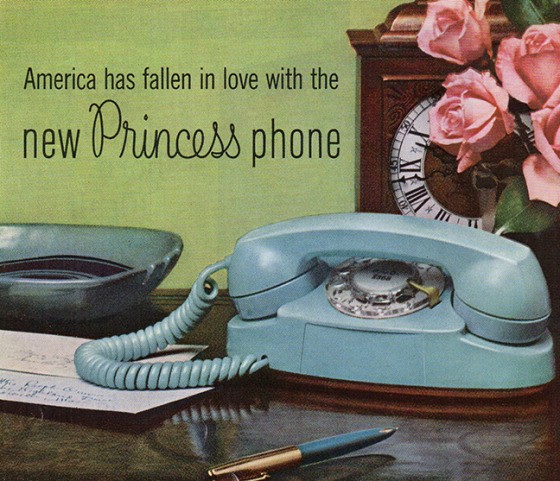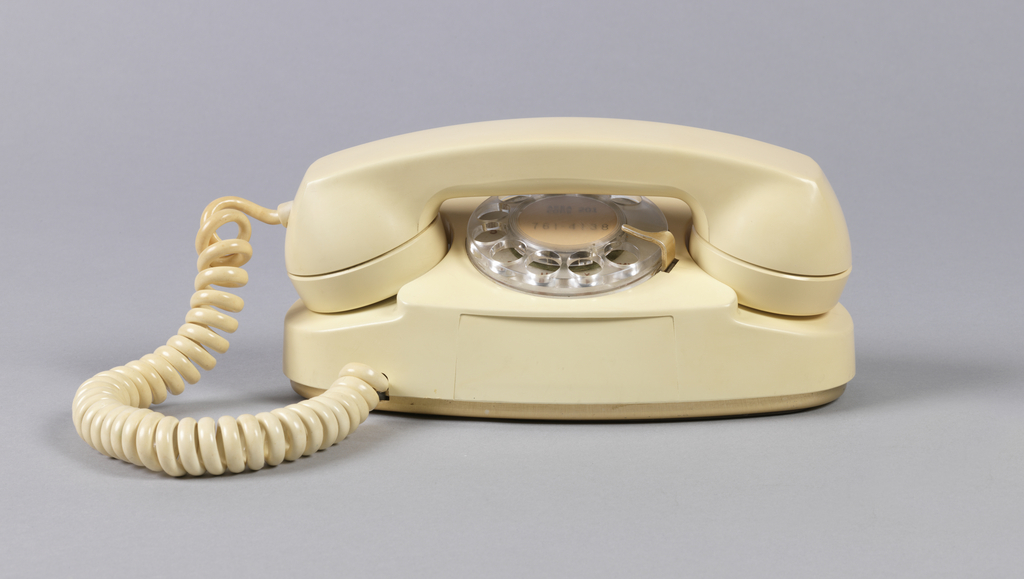For much of the twentieth century, telephones were standard issue, designed for durability and function rather than consumer appeal. After 1953, color transformed the telephone from a basic technology into an alluring consumer product. AT&T ran ad campaigns encouraging women to see the phone as an element of home decoration.
What if new phone models could target specific demographic groups? In the 1950s, advertisers and manufacturers discovered in teenagers a lucrative market for consumer goods; and in 1959, the Dreyfuss office introduced a glamorous new icon of phone design: the Princess. With its small footprint, pretty colors, and light-up dial, the Princess appealed to young women as a bedside accessory. The design team had observed users lying in bed with the base of the Model 500 resting heavily on their torso; the Princess’s lighter, more portable design responded to this unanticipated use.

Advertisment for the Princess phone
By endowing the Princess with a standard Model G handset, the Dreyfuss team introduced a dramatically new product while minimizing manufacturing costs. Dreyfuss called the existing handset a “survival form”—a familiar element incorporated into an updated product. The designers moved the numbers and letters back inside the finger holes, deeming efficiency less important than saving space. The phone’s light weight proved to be a liability, however, as users commonly pulled the base off its table by the cord; later designs feature a weighted base.
A Princess phone and other objects by Henry Dreyfuss appear in the exhibition Beautiful Users, 12 December 2014 – 26 April 2015.
Ellen Lupton is Senior Curator of Contemporary Design at Cooper Hewitt, Smithsonian Design Museum and Director of the Graphic Design MFA program at Maryland Institute College of Art.

One thought on “Princess Phone, Henry Dreyfuss”
S.Allan on November 25, 2022 at 9:29 am
Can you give me a price for six phones as top picture colour cream